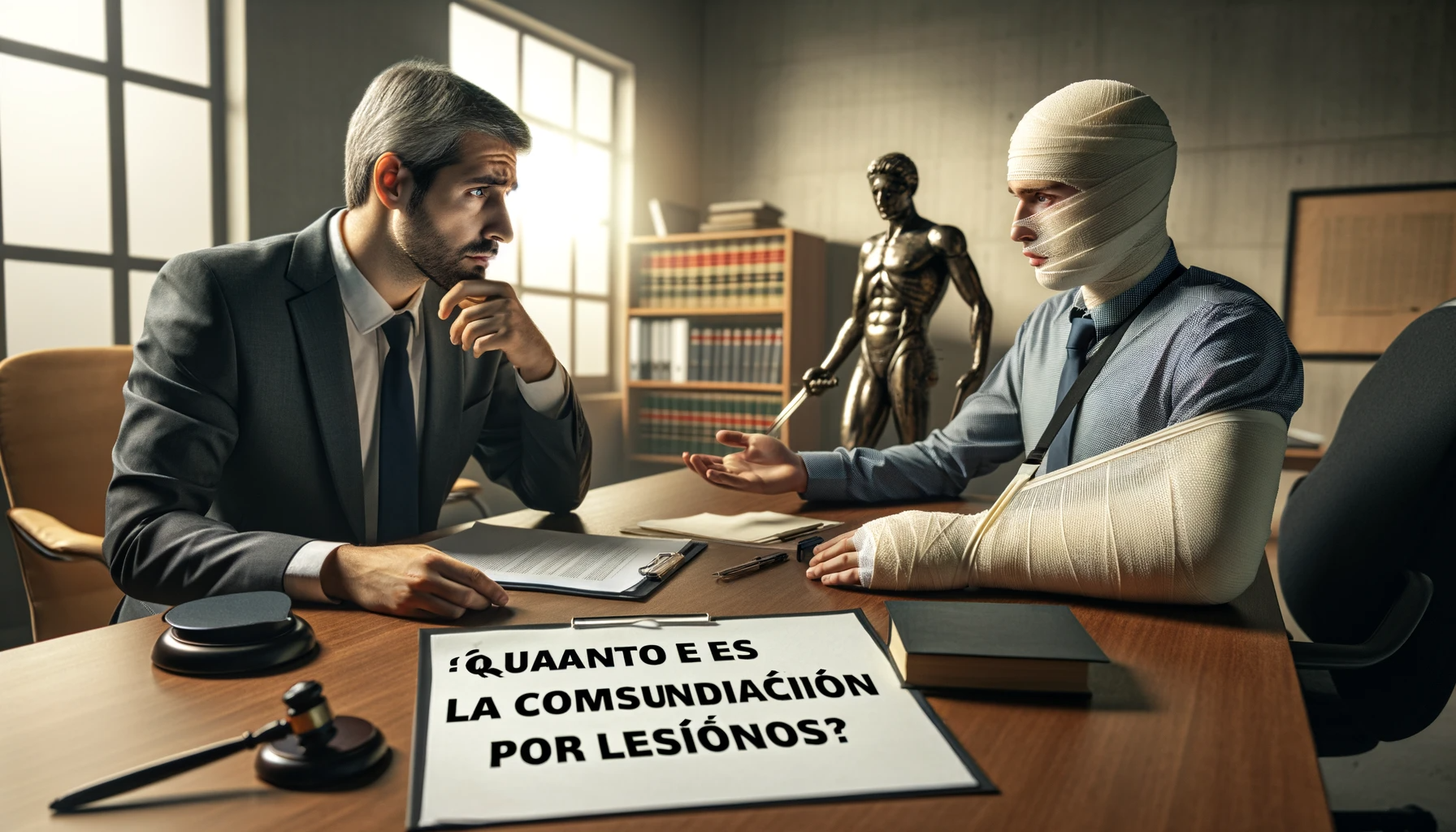Understanding Insurance Coverage
Basics of Insurance Coverage
Insurance coverage refers to the items or conditions that an insurance company compensates or indemnifies for. It varies greatly depending on the type of insurance policy, the insurance provider, and the details of the specific contract. A common aspect across all insurance types is the principle of indemnification, which aims to restore the insured party to their original financial position before the occurrence of a covered loss.

Components of an Insurance Policy
An insurance policy has several integral parts that shape the coverage. The 'Declaration page' presents the basic information about the policyholder, policy period, coverage limits, and premiums. The 'Insuring Agreement' outlines the broad promises of the insurer, while 'Exclusions' enumerate what is not covered. The 'Conditions' section specifies the rules of coverage, and 'Endorsements' may add or modify coverage elements.
Types of Insurance Coverages
There are different types of insurance coverages. Property insurance covers damage to or loss of personal property. Liability insurance covers legal liabilities from injury or damage to someone else. Health insurance provides coverage for medical expenses. Life insurance coverage pays out upon the death of the insured, and auto insurance covers vehicle-related damages.
Understanding Insurance Limits and Deductibles
The limit of insurance is the maximum amount the insurance company will payout for a covered loss. These limits can be per occurrence (per incident) or aggregate (total for the policy period). On the other hand, a deductible is the amount the policyholder pays out of pocket before the insurance benefits kick in. The choice of deductibles and limits significantly influence the premium amounts.
Importance of Understanding Your Coverage
Understanding your insurance coverage is crucial as it directly impacts your financial security. Ensure to read and understand every aspect of your policy. It's important to know what is covered and what isn't, the limits of your coverage, and the cost of the premium. This way, you can accurately assess the value of your policy and negotiate changes if necessary.
Types of Insurance Coverage
Life Insurance Coverage
Life insurance coverage provides financial support to your beneficiaries after your demise. This type of coverage often assists in covering funeral expenses, unpaid debts, or providing income for dependents. There are different forms of life insurance such as term life, whole life, and universal life insurance.
Health Insurance Coverage
Health insurance helps cover the cost of medical care, including doctor's visits, hospital stays, medications, and surgeries. It can also cover preventive care services like vaccinations, checkups, and screenings. The scope of coverage may vary based on the type of health insurance plan chosen.
Auto Insurance Coverage
Auto insurance coverage is a mandatory requirement in many jurisdictions for car owners. It helps cover the costs arising from auto
Accidents or theft. Coverage categories include liability coverage, collision coverage, comprehensive coverage, uninsured/underinsured motorist coverage, and
Personal injury protection.
Homeowners Insurance Coverage
Homeowners insurance provides coverage for damages to your home due to disasters like fire, hail, and windstorms. It often includes coverage for your personal belongings located inside the home. Additional living expenses (ALE), which cater for hotel bills or meals if you can't live in your household due to damage, might also be covered.
Liability Insurance Coverage
Liability insurance coverage protects against the expenses related to being sued for
Bodily injuries or property damage that you or family members cause to other people. This coverage is generally part of homeowners or auto insurance policies, but can also be purchased separately especially for businesses.
What Does Health Insurance Cover?
Medical Treatment and Procedures
Health insurance primarily covers the costs associated with medical treatment and procedures. This includes visits to your primary care physician, specialists, lab tests, surgeries, emergency room visits, and hospital stays. The extent of coverage may vary depending on the particular policy, with some covering a larger percentage of the costs compared to others.
Prescription Medications
A significant feature of health insurance is the coverage of prescription medications. Insurers often maintain a formulary or list of covered drugs, where the cost-sharing structure can vary. Some plans might offer lower co-pays for generic drugs, while other medications could be more expensive.
Preventive Care
Most health insurance plans also cover preventive services. These are essential health benefits intended to prevent diseases before they happen. Such services include immunizations, screenings for various illnesses like cancer and diabetes, as well as wellness visits and check-ups.
Mental Health Services
Health insurance typically encompasses mental health services as part of its benefits package. This includes therapy, counseling, psychiatric evaluations, and, sometimes, inpatient care for mental health conditions. However, the exact nature of coverage can depend on the specific policy and how the insurer defines mental health services.
Physical Therapies and Rehabilitative Services
Lastly, health insurance often includes coverage for physical therapies and rehabilitative services necessary due to injury, disability, or chronic conditions. These services aim to help individuals regain skills and functionality. Coverage may include physical, occupational, and speech-language therapies.
What Does Car Insurance Cover?
Under car insurance, different coverage types are offered to protect both you and your vehicle in case of various incidents. Notably, the exact coverage may vary depending on the type of policy you choose, but most policies often encompass several essential categories.
Liability Coverage
Liability coverage is a crucial part of any car insurance policy. It covers the costs associated with
Injuries and property damage you cause to others in an accident. There are two types of liability coverage: bodily injury and property damage. Bodily injury coverage pays for costs related to someone's injury if caused by an accident where you're at fault. Property damage coverage provides for damages to someone else's property during a collision.
Collision Protection
This protection covers the repair or replacement of your car if it's damaged in an
Accident with another vehicle or object. Regardless of who is at fault in the accident, this coverage will apply. It's especially beneficial when the other driver either has insufficient insurance or none at all.
Comprehensive Coverage
Comprehensive coverage pays for damages to your vehicle caused by events that aren't accident-related. This could include incidents like theft, vandalism, fire, natural disasters and hitting an animal on the road. Essentially, it covers scenarios that fall outside of the category of a typical 'collision.'
Uninsured and Underinsured Motorist Coverage
This covers costs if you're involved in an
Accident with an uninsured driver or if the other driver does not have enough insurance to cover the full extent of the damages. It can also kick in for hit-and-run situations. This coverage is particularly important since it shields you from significant out-of-pocket expenses in these scenarios.
Medical Payments Coverage
Known also as MedPay, this coverage pays for medical expenses incurred as a result of a
Car accident, regardless of who is at fault. It can cover costs like hospital visits, surgery, X-rays and more. Some policies also cover funeral expenses under MedPay.
Remember that the exact coverage depends on your individual policy. Always ensure you fully understand what your car insurance covers to avoid unwelcome surprises in the event of an
Accident.
Homeowners and Renters Insurance Coverage
Insurance plays a critical role in mitigating financial risks. For homeowners and renters, the insurance policy typically covers various potential damages to the property they own or rent, their belongings, and liability for
Injuries incurred on the property. This section will emphasis the main components covered by homeowner's and renter's insurance.
Structure and Building Coverage
Under this component, homeowner's insurance generally covers the cost of repairing or rebuilding your house if it's damaged or destroyed by an insured event such as a fire, storm, or other natural disasters. It often includes structures that are detached from your home like a garage or shed. However, generally, standard homeowner's policies do not cover damage caused by poor home maintenance or routine wear and tear.
Personal Property Protection
Both homeowners and renters insurance typically offers personal property coverage that protects your belongings inside or outside your home should they be stolen or damaged by an insured peril. This can include furniture, clothes, electronics, and more. Some high-value items like jewelry may require additional coverage. It's vital to ensure you have enough coverage to replace all your personal property in case of a total loss.
Liability Coverage
A standard homeowners or renters insurance policy also includes liability coverage, which protects you if someone gets hurt on your property and decides to sue. It can also cover damage or injury caused by you or members of your household, including pets, to others. So, if a guest slips and falls in your home, your liability coverage would pay for their medical bills and any legal expenses up to your policy's limit.
Additional Living Expenses (ALE)
If your home becomes uninhabitable due to damage from a covered peril and you need to live elsewhere temporarily, Additional Living Expenses coverage, often called 'Loss of Use', can help. It typically covers hotel bills, restaurant meals, and other costs over and above your usual living expenses.
Remember that each homeowners and renters insurance policy may vary in terms of what is covered and up to how much. Always take time to fully understand your policy, ask questions and ensure you have the right amount and type of coverage for your specific needs.
Life Insurance: What's Included?
Basics of Life Insurance Coverage
Life insurance is essentially a contract between an individual and an insurance company. In this agreement, the person pays regular premiums in exchange for a payout to their beneficiaries upon their death. As per majority of policies, the insurance benefits can help cover funeral costs, household expenses, debts, and provide financial support for the deceased's dependents.
The Different Types of Life Insurance
There are primarily two types of life insurance: term and permanent. Term life insurance provides coverage for a specific period of time (like 10, 20, or 30 years) and pays out the benefit only if the policyholder dies during the term. Permanent life insurance, on the other hand, covers the entire lifespan of the individual and accumulates a cash value over time.
Key Components of a Life Insurance Policy
A standard life insurance policy will specify certain key elements. The face amount is the money that will be paid out upon death. The premium is the cost to the policyholder for maintaining the policy. The policyholder can also name multiple beneficiaries who are entitled to receive portions of the policy payout after the policyholder's death.
Additional Riders and Features
Many life insurance policies offer additional features or riders which enhance the basic coverage. For instance, some policies may include a terminal illness rider that allows the policyholder to access part of the death benefit while they're still alive if diagnosed with a terminal disease. Other common riders include those for Accidental death and dismemberment or child protection.
Exclusions in Life Insurance Policies
Despite the extensive coverage, there are certain exclusions in life insurance policies. Commonly, these policies do not cover deaths due to suicide within the first two years of the policy, acts of war, or deaths resulting from illegal activities. Always read the fine print to understand what types of death are not covered by your policy to avoid any surprises in the future.
Limitations and Exclusions in Insurance Policies

Understanding Exclusions in Insurance Policies
Exclusions are the specific situations, conditions, or circumstances where the insurance policy will not provide any coverage. These can include pre-existing medical conditions, intentional damage, or damages caused by natural disasters. For example, a health insurance policy may not cover treatments linked to pre-existing conditions, and homeowners may need separate flood insurance if their home insurance doesn't cover flood damage. Reading and understanding this section of your insurance policy is crucial as it clearly delineates what your policy will not cover.
Limitations: Specific Restrictions in Your Coverage
Limitations are different from exclusions – they don't entirely rule out coverage, but they limit it in some way. This could be a limit on the total payout you can receive, a limit on the number of claims you can make within a period, or a cap on how much the insurer will pay for a specific category of claim. A car insurance policy, for instance, may have a limit on how much it will pay out for damages caused by an at-fault
Accident. Some policies may also have limitations on the replacement of expensive items like jewelry unless these items have been specifically insured under the policy.
Situational Exclusions: Location and Circumstance Can Matter
Some exclusions and limitations are based on location or specific circumstances. If a policyholder's vehicle is damaged in a riot, for instance, the damage may not be covered if the car insurance policy excludes losses due to civil unrest. Similarly, a homeowner's policy might exclude
Injuries caused by certain types of animals or damage caused by pests. In many cases, policyholders must purchase additional riders or endorsements to cover these situations.
Understanding Policy Caps and Deductibles
Insurance policies typically have a cap, which is the maximum amount the policy will pay out. Anything beyond this cap, the policyholder would need to pay out-of-pocket. Similarly, deductions are predetermined amounts that a policyholder must pay before their insurance coverage kicks in. These limitations significantly influence the out-of-pocket costs borne by the policyholder.
The Importance of Thoroughly Reading Your Insurance Documents
Given the significant implications exclusions and limitations have on your coverage, understanding them helps avoid surprises during the claims process. Always read these sections of your policy documents thoroughly and ask your insurer any questions to clarify your understanding. Never assume that a specific situation, item, or type of damage is covered; when in doubt, confirm with your insurance provider.
Conclusion
Insurance provides coverage for various risks depending on the type of policy you have. It typically covers expenses related to medical treatment, property damage, liability claims, and other specified risks outlined in your policy.
Look for an attorney who has the right legal resources for your legal needs.
Contact us here on the
Warmuth Law website or through our hotline 888-517-9888.
Frequently Asked Questions (FAQ's)
1. Does insurance cover medical expenses?
Yes, health insurance covers medical expenses such as doctor visits, hospital stays, prescription medications, and certain medical procedures. The coverage details vary based on your policy.
2. What types of property damage does insurance cover?
Property insurance covers damage to your home, belongings, or other property caused by covered events like fire, theft, or natural disasters. It can also cover damage to other people's property caused by you or your family members.
3. Does insurance cover liability claims?
Yes, liability insurance covers costs associated with legal claims against you for
Injuries or damages to other people or their property. It can cover legal fees, settlements, and judgments up to the limits of your policy.
4. Can insurance help with financial losses from business interruptions?
Yes, business interruption insurance can help cover financial losses if your business is unable to operate due to a covered event like a fire or natural disaster. It can help pay for lost income, rent or lease payments, and other expenses.
5. Does insurance cover expenses related to Car accidents?
Yes, auto insurance covers expenses related to
Car accidents, including repairs to your vehicle, medical expenses for
Injuries, and liability for damages to other vehicles or property. The specific coverage depends on your policy.













